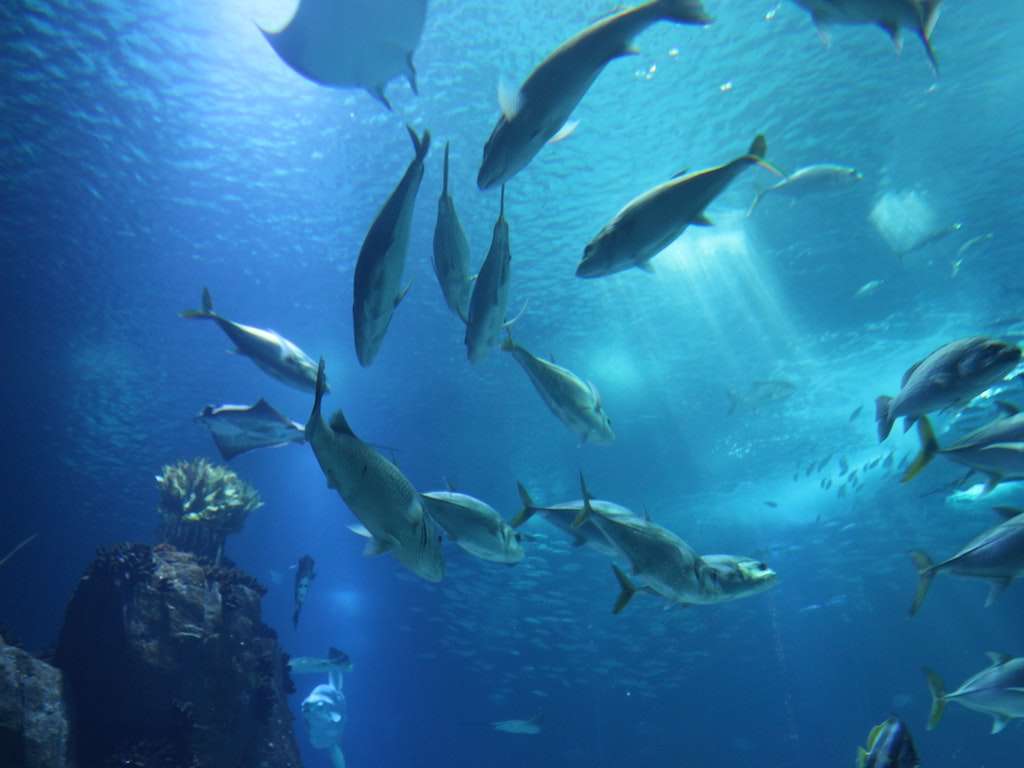The oceanic resource-based economy is a massive opportunity for developing nations. They can use their abundant renewable marine resources to construct creative green industries and build resilient economies. This will not only dampen the environmental harm but will also support climate action. Global expertise and funds need to be distributed fairly to developing nations to form these oceanic sectors. Conversely, the stakeholders must take an inclusive approach to collaborate with local societies that have rich cultural knowledge. Then, several innovative sustainable solutions will unfold.
What is an Oceanic economy?
“The ocean economy is the sum of the economic activities of ocean-based industries, together with the assets, goods and services provided by marine ecosystems.”
Organisation for Economic Co-operation and Development (OECD)
Nearly 3 billion people with the most living in developing nations, depend on marine resources for nutrition, livelihoods, foreign exchange, etc. Massive opportunities are available for these coastal developing countries to build sustainable and resilient oceanic economies. The value of this is estimated to range from $3 trillion to $6 trillion. They can expand beyond sustainability into thrivability.
Emerging Sectors
Furthermore, the oceanic economy is evolving with scientific research, disruptive technologies and innovation. Many new ocean-based sectors are developing apart from the conventional sectors like fisheries, aquaculture, tourism, and marine transportation. Some of the emerging innovative sectors consist of offshore wind energy, wave and tidal energy, seabed mining, marine biotechnology, marine ecosystems services, seaweed farming and plastics substitutes. THRIVE believes that humanity can do better with the knowledge currently available to leverage into these new industries.

Source: CNN
Environmental Concerns
Yet, climate change, pollution and overfishing are threatening this great potential that the oceans hold. The ocean feels the impact, as the prime carbon sink in the world and also faces the danger of biodiversity losses. Annually, approximately 11 million tonnes of plastic end up in the ocean. Concurrently, 34% of fish stocks have dropped beyond their biological limits.
These human activities and numerous global catastrophes have varyingly impacted the different sectors of the blue economy. THRIVE recognises that human happiness can sometimes compete with environmental well-being, so we use our ciambella chart to illustrate the ‘thrivable zone‘.
why should we focus on the oceanic economy in developing nations?
Notably, almost 58.5 million persons globally work in primary fish manufacture and aquaculture only. Most of them are living in developing nations. Similarly, maritime transport is a key sector in the globalisation of the markets, through containerships, tankers, and seaports for the vessels. In 2021, ports in developing nations were instrumental in transporting 55% of global exports loaded and 61% of imports unloaded by volume.

Source: Pixabay
Diversification in The Oceanic Economy
COVID-19 exposed the strengths and vulnerabilities of various oceanic sectors. Trade of ocean goods could weather the crisis much better by dropping only about 3.2% in 2020. Seafood processing and marine high-technology production expanded during the height of the infection. This is mainly because the public preferred non-perishable ready-made food items and electronic monitoring devices during the pandemic. Gross aquatic animals and algae farming rose to a historic high of 214 million tonnes in 2020.
However, the services sector that includes maritime and coastal tourism and marine passenger transportation crumbled by 59% in 2020. Consequently, coastal societies that were highly dependent on tourism for income were severely affected mostly due to lockdowns. Though ocean tourism is a trillion-dollar trade, it is critical to expand across several industries for economic stability.
Small Island Developing States (SIDS)
SIDS are low-lying islands that are small in land mass and population size. However, the ocean under their control, (their Exclusive Economic Zone), is several times larger than their land area. Conversely, this is a unique opportunity to bolster economic development through the sustainable use of maritime resources. This can ensure food security, handle unemployment and alleviate poverty.
They are highly dependent on export goods and short of commercial options due to their finite sources. This has made them extremely vulnerable to external shocks like the global financial crisis, and the COVID-19 pandemic, as well as ongoing sustainability issues like biodiversity loss and climate change. Biodiversity is critical as these economies rely heavily on tourism and aquaculture. Aside from that, it also alleviates the damages caused by soil erosion and natural disasters (such as storms and floods), and additionally, provides food and clean water.

Source: Pexels
Hurricanes, floods and cyclones have devastated the lives and livelihoods of those residing in SIDS. At the same time, they are also constantly faced with existential risk due to slow onset events like sea level rise. Concurrently, their remote geography to world markets also adds to the high transportation cost.
achieving the United Nations Sustainable Development Goals (SDGs): how do they link to the oceanic economy in developing nations
Developing nations have the natural resources required for many oceanic sectors abundantly. They can take advantage of these in sustainable ways (SDG12) to create new innovative industries (SDG9) and tackle unemployment (SDG 8). In turn, this will alleviate poverty (SDG1) and hunger (SDG2) while uplifting economies (SDG8) and societies. Furthermore, by moving towards green sectors (SDG7) as given below, they can contribute towards climate action (SDG13) while protecting the environment on land (SDG15) as well as under the ocean (SDG14). THRIVE seeks to instil the idea that sustainable solutions not only prevent disaster but also offer the potential for flourishing societies.
Offshore wind energy
Offshore wind energy has remarkable potential to produce over 18 times the worldwide demand for electricity in 2019. Additionally, developing countries such as Brazil, Indonesia, India, the Philippines, South Africa, Sri Lanka, and Vietnam have strong wind resources. They can harness this sizable opportunity to generate clean and reliable energy (SDG7) to shield power security and uplift their economies. As this technology will require specific skills, it will also create new green jobs (SDG8)to construct, maintain and administrate these wind farms.
“In just five years, five developing countries could add 3.5 GW of capacity, an extra US$12.5 billion for their economies and create 130,000 FTE work-years. The five countries – Argentina, Colombia, Egypt, Indonesia and Morocco, would also enjoy a virtuous cycle that continues to deliver benefits after this initial period.”
Global Wind Energy Council (GWEC)

Source: Unsplash
Also, we have already successfully implemented offshore wind development in the UK and their expert knowledge is useful to execute similar projects. On that note, global organisations like World Bank, International Finance Corporation, and Global Wind Energy Council are supporting developing nations with financial assistance, knowledge sharing and multi-stakeholder collaboration (SDG17).
Seaweed farming
Seaweed aquaculture is a promising segment that has increased more than threefold in its international market value in just 20 years. In numeric values, it has soared from $4.5 billion to $16.5 billion, between 2000 and 2020. This is especially a great option for developing countries to farm seaweed as it does not require fresh water (SDG6) or fertiliser to develop while absorbing CO2, substantially aiding climate action (SDG13). Its usages include food (SDG2), cosmetics, biofuels, and plastic substitutes (SDG12).
Algae
Algae has the potential to substitute several petrochemical products sustainably (SDG12). Diatoms are algae with micro-abrasive properties that we use in water filtration systems and as natural pest controls. Due to its thickening property, algae is used in skin treatment, and creams, masks and cleansers in the cosmetics industry. Similarly, food additives such as carrageenan and algin derived from seaweeds are also widely used.
We produce natural supplements containing omega-3 fatty acids directly from algae. This is a great option for vegan and vegetarian consumers to intake the required nutrition (SDG3). Algae make excellent organic fertilisers encompassing minerals and nutrients for the healthy growth of crops (SDG15).

Source: Pixabay
Plastic substitutes sector
Apart from seaweed, other forms of natural materials can replace several consumer goods like straws, food wrapping and other plastic products, with environmentally safe alternatives (SDG9). For instance, natural fibres like bamboo, banana plants, coconut husks, and post-harvest agricultural wastes are a few of these materials that are plentiful in developing nations. The local groups are also extensively knowledgeable in using these supplies.
The benefits of using these natural ingredients are manifold. They can biodegrade or be reprocessed, barely contaminating the ocean (SDG14). These ignite innovation and transpire new industries (SDG9) that can create jobs and sustainable economies (SDG8). This supports the reduction of waste and pollution (SDG12), mainly for developing nations that have inadequate abilities to manage these problems while conducting a circular economy.
Plastic substitutes globally traded for $388 billion in 2020, and 66% of these are in abundance in developing nations in the form of raw materials. However, it is only about 33% of the value of fossil fuel-based plastics traded. This highlights the enormous growth potential in this sector.
Moving Forward
Funding
Globally, there is a pressing necessity to enhance funding to guard the ocean and its resources sustainably. Yet, the investments towards the sustainability development goal of life below water (SDG14) are the lowermost. Between 2013 and 2018, the ocean economy only received about 1.6% of the total global official development financial aid.
Considering the COVID-19 impact and other global crises, at least $175 billion is required annually to reach SDG14 by 2030. Investing $2.8 trillion now into four ocean-based sustainable solutions are estimated to generate $15.5 trillion in net profits by 2050. These solutions include the conservation and re-habitation of mangroves, decarbonising global shipping, sustainable aquaculture and offshore wind farms.
Inclusivity
Besides, equity and inclusivity in sharing the benefits of aquatic resources, especially relating to the poor and vulnerable communities are also essential to tackle societal sustainability concerns (SDG16). The funds are also not uniformly distributed across countries (SDG10). The impoverished countries, predominantly small island developing states (SIDS) and least developed nations receive the least monies (SDG11).

Source: Green Queen
Finally, it is imperative to invest in research and development in the booming industries in developing nations. Financial support to developing countries is crucial to strengthen their technology, expertise and productive capabilities. This will assist them to take advantage of these opportunities to diversify, create jobs for local people and strengthen their economies.
A Thrivable Framework
To thrive as a society beyond sustainability, THRIVE invests interest in issues fundamental to the integrity of our society. Apart from sustainability, this also means examining issues related to equity and inclusivity and human rights. Safeguarding human well-being in all domains is paramount to THRIVE‘s mission. THRIVE Framework examines issues and evaluates potential solutions – making predictive analyses using the oceanic economy in developing nations that support environmental and social sustainability transformations.
Furthermore, THRIVE is a trailblazer in researching and educating for a thrivable future encompassing all sustainability goals. On that note, THRIVE has a plethora of resources including informative, and diverse blogs. Explore our podcast series, and join our regular live webinars featuring expert guests in fields related to the oceanic economy. For more information, sign up for our newsletter to receive regular updates.